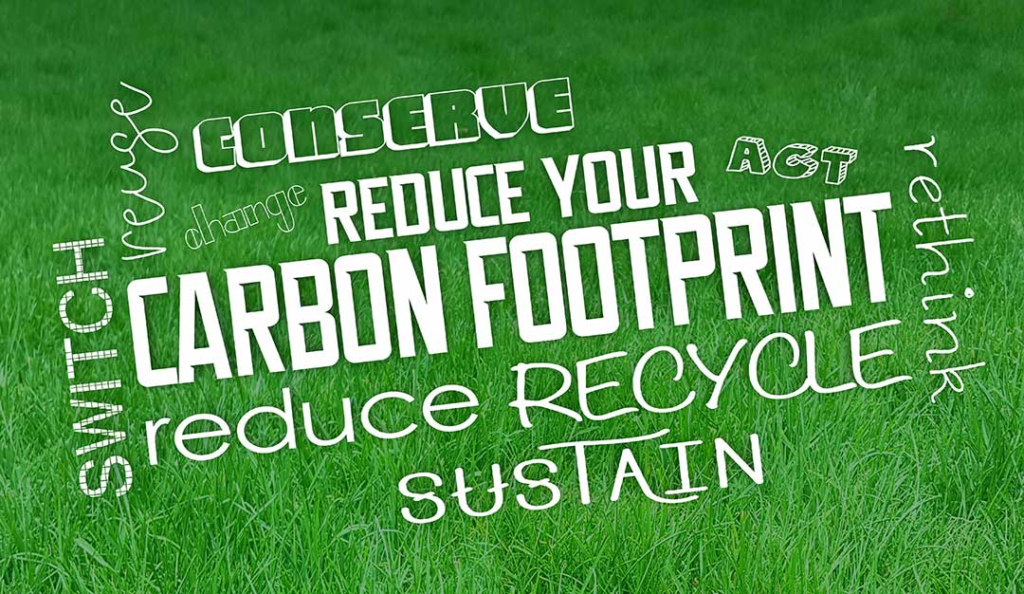Sustainable living means making choices that reduce your negative impact on the environment. It doesn’t require huge sacrifices or expensive investments. With just a few simple steps, you can lower your carbon footprint and contribute to a cleaner, greener planet.
Climate change is no longer a faraway threat — it’s here. From rising sea levels to intense heatwaves and floods, the effects of global warming are visible across the globe. But there’s good news: each of us can play a role in fighting climate change by making small but impactful changes in our daily lives. This is where sustainable living comes in.
Let’s explore what a carbon footprint is, and how you can easily reduce yours through everyday actions.

What is a Carbon Footprint?
A carbon footprint is the total amount of greenhouse gases, especially carbon dioxide (CO₂), that are released into the atmosphere due to human activities. These gases come from burning fossil fuels for electricity, heating, transportation, and even from the production of food and goods.
According to the United Nations, our carbon footprint is one of the major causes of global warming. The more we reduce it, the better chance we have of slowing down climate change.
1. Switch to Energy-Efficient Appliances
One of the easiest ways to cut down your carbon emissions is to replace old appliances with energy-efficient ones. Look for the Energy Star label, which means the appliance uses less electricity and water.
For example, switching to LED bulbs can save up to 80% more energy than traditional bulbs.
Backlink: Energy Star Efficient Products
2. Use Public Transport, Carpool, or Bike
Transportation is one of the biggest contributors to greenhouse gas emissions. Instead of driving alone, consider carpooling with coworkers or using public transport. Better yet, if your destination is close, walk or ride a bicycle.
Backlink: Carbon Emissions by Transport
3. Reduce Meat and Dairy Consumption
The livestock industry is a major source of methane, a powerful greenhouse gas. Even cutting out meat once or twice a week can significantly reduce your carbon footprint. Try adding more plant-based meals to your diet.
Backlink: Impact of Meat on the Environment
4. Buy Local and Seasonal Produce
Transporting food over long distances burns fuel and increases emissions. Buying local produce supports nearby farmers and reduces the carbon footprint related to food transportation. Seasonal fruits and vegetables are also fresher and more nutritious.
5. Say No to Single-Use Plastics
Plastic production involves high amounts of fossil fuels. Items like straws, plastic bags, and water bottles are used once and then discarded, polluting our environment. Use reusable bags, metal straws, and refillable water bottles.
Backlink: Plastic Pollution Facts
6. Conserve Water at Home
Heating water uses a lot of energy. Reduce your water usage by fixing leaks, installing low-flow showerheads, and turning off taps when not in use. Wash clothes in cold water to save energy.
7. Unplug Devices When Not in Use
Electronics still use electricity even when turned off — a phenomenon known as “phantom power.” Unplugging chargers, TVs, and computers when they are not being used can lower your electricity bill and reduce emissions.
8. Recycle and Compost
Recycling reduces the need for raw materials and saves energy. Composting kitchen waste turns it into natural fertilizer and keeps it out of landfills, where it would release methane gas.
Backlink: How to Start Composting
9. Choose Sustainable Fashion
Fast fashion is harmful to the planet. It uses water, chemicals, and often leads to massive textile waste. Buy fewer clothes, support eco-friendly brands, and recycle or donate old items instead of throwing them away.
Backlink: The Environmental Cost of Fast Fashion
10. Plant Trees or Support Reforestation
Trees absorb CO₂ and produce oxygen. You can plant a tree in your community or support reforestation programs globally. It’s one of the most powerful tools to combat climate change.
Backlink: Why Planting Trees Helps
Why It Matters
The average carbon footprint for a person in the U.S. is around 16 tons per year, which is one of the highest in the world. Globally, the average is closer to 4 tons. To prevent the worst effects of climate change, experts suggest reducing that number to 2 tons per person per year.

By adopting the steps above, you may not reach zero emissions, but you will make a significant difference. And if millions of people make similar changes, the impact becomes massive.
Final Thoughts
Sustainable living isn’t about being perfect — it’s about making smarter choices where possible. Every time you turn off an unused light, avoid plastic, or eat a plant-based meal, you’re helping to protect the planet. These actions, though small, build up over time.
If you want to leave a better world for future generations, start with yourself. Begin with one or two of these tips and build from there.
Change doesn’t happen overnight, but with consistency and awareness, sustainable living can become second nature.
Further Reading and Tools
Read also – Doctors Recommend These 5 Daily Diet Tips for a Healthier You





